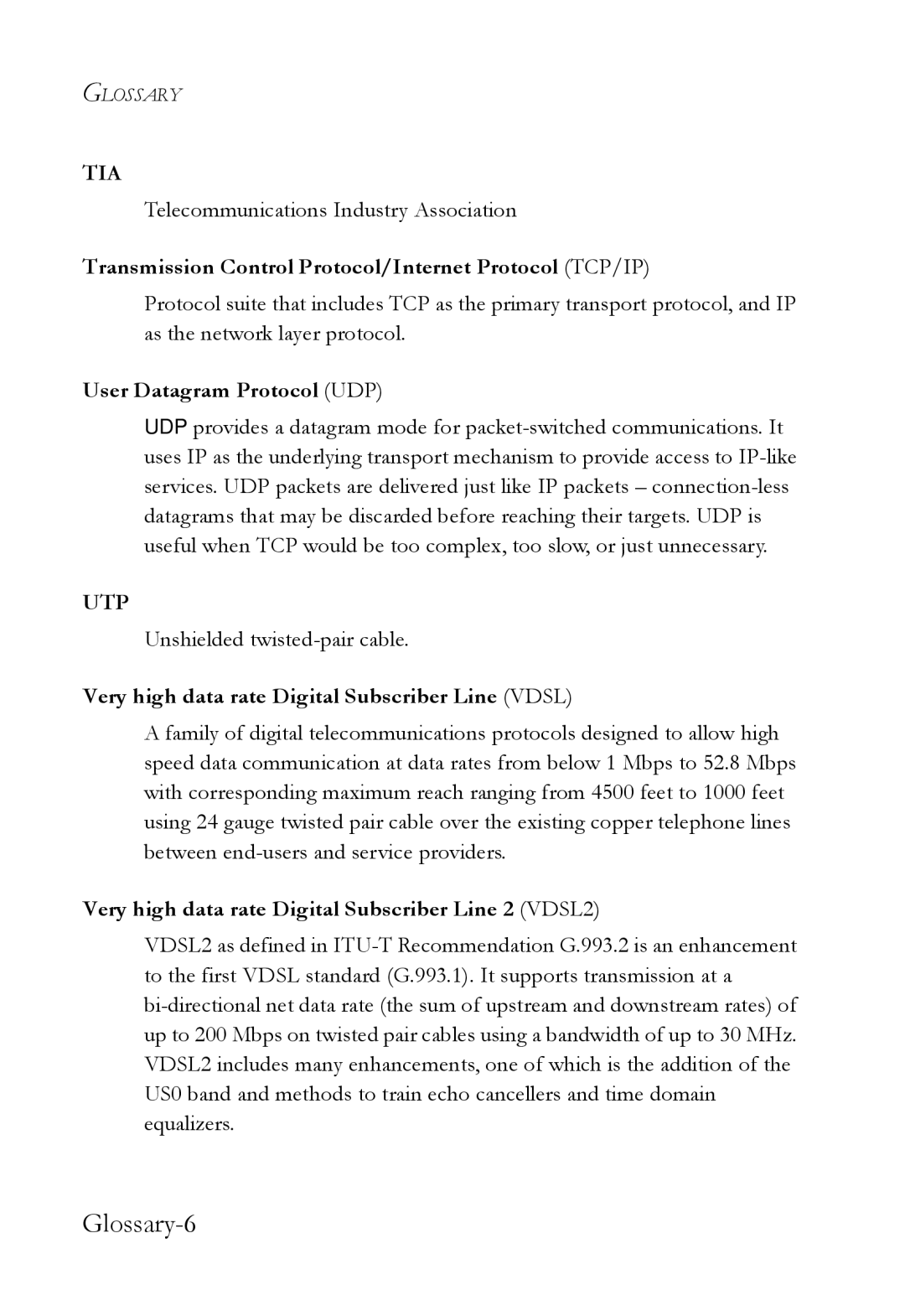GLOSSARY
TIA
Telecommunications Industry Association
Transmission Control Protocol/Internet Protocol (TCP/IP)
Protocol suite that includes TCP as the primary transport protocol, and IP as the network layer protocol.
User Datagram Protocol (UDP)
UDP provides a datagram mode for
UTP
Unshielded
Very high data rate Digital Subscriber Line (VDSL)
A family of digital telecommunications protocols designed to allow high speed data communication at data rates from below 1 Mbps to 52.8 Mbps with corresponding maximum reach ranging from 4500 feet to 1000 feet using 24 gauge twisted pair cable over the existing copper telephone lines between
Very high data rate Digital Subscriber Line 2 (VDSL2)
VDSL2 as defined in
